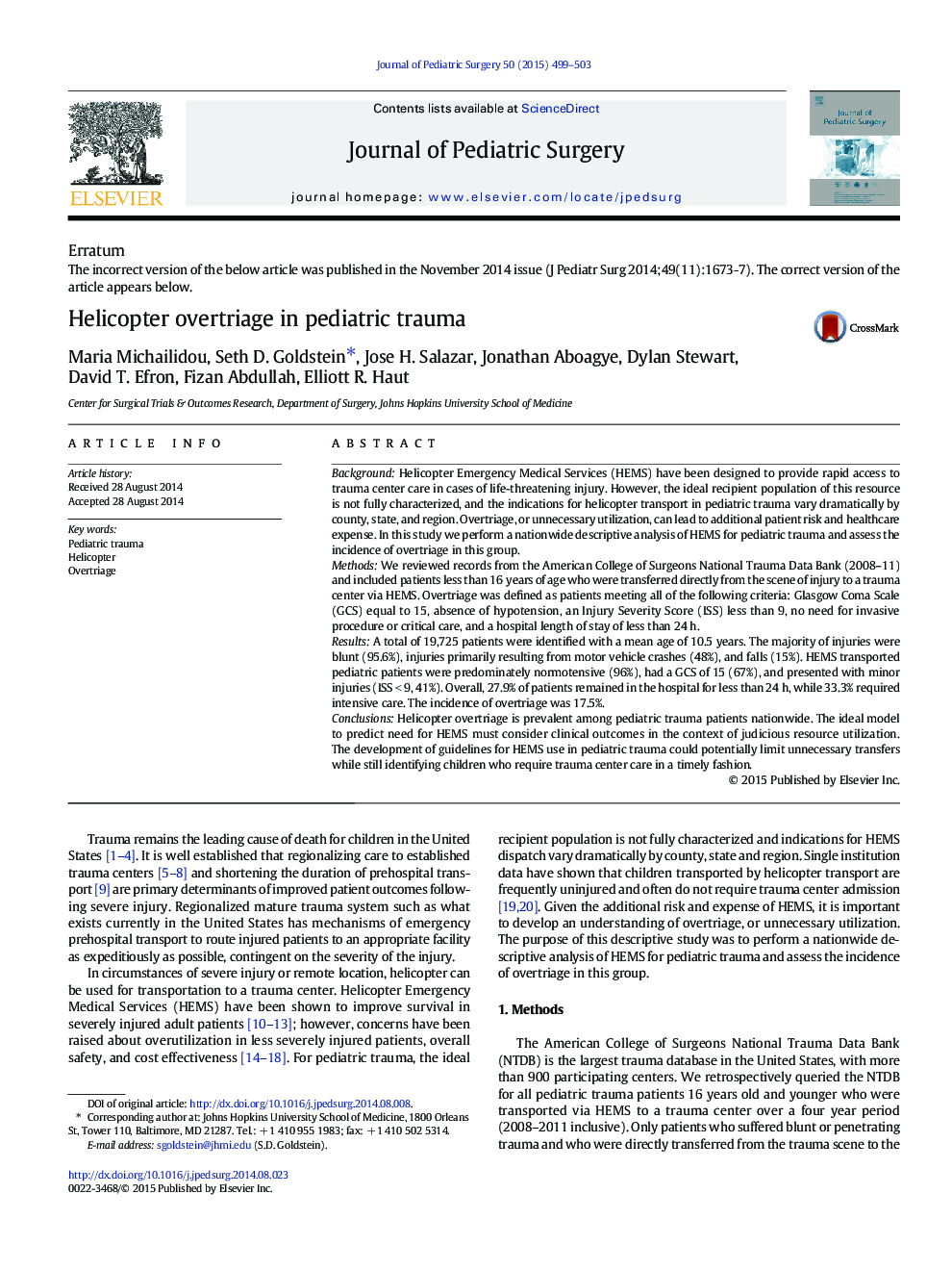| کد مقاله | کد نشریه | سال انتشار | مقاله انگلیسی | نسخه تمام متن |
|---|---|---|---|---|
| 4155504 | 1273747 | 2015 | 5 صفحه PDF | دانلود رایگان |
BackgroundHelicopter Emergency Medical Services (HEMS) have been designed to provide rapid access to trauma center care in cases of life-threatening injury. However, the ideal recipient population of this resource is not fully characterized, and the indications for helicopter transport in pediatric trauma vary dramatically by county, state, and region. Overtriage, or unnecessary utilization, can lead to additional patient risk and healthcare expense. In this study we perform a nationwide descriptive analysis of HEMS for pediatric trauma and assess the incidence of overtriage in this group.MethodsWe reviewed records from the American College of Surgeons National Trauma Data Bank (2008–11) and included patients less than 16 years of age who were transferred directly from the scene of injury to a trauma center via HEMS. Overtriage was defined as patients meeting all of the following criteria: Glasgow Coma Scale (GCS) equal to 15, absence of hypotension, an Injury Severity Score (ISS) less than 9, no need for invasive procedure or critical care, and a hospital length of stay of less than 24 h.ResultsA total of 19,725 patients were identified with a mean age of 10.5 years. The majority of injuries were blunt (95.6%), injuries primarily resulting from motor vehicle crashes (48%), and falls (15%). HEMS transported pediatric patients were predominately normotensive (96%), had a GCS of 15 (67%), and presented with minor injuries (ISS < 9, 41%). Overall, 27.9% of patients remained in the hospital for less than 24 h, while 33.3% required intensive care. The incidence of overtriage was 17.5%.ConclusionsHelicopter overtriage is prevalent among pediatric trauma patients nationwide. The ideal model to predict need for HEMS must consider clinical outcomes in the context of judicious resource utilization. The development of guidelines for HEMS use in pediatric trauma could potentially limit unnecessary transfers while still identifying children who require trauma center care in a timely fashion.
Journal: Journal of Pediatric Surgery - Volume 50, Issue 3, March 2015, Pages 499–503
